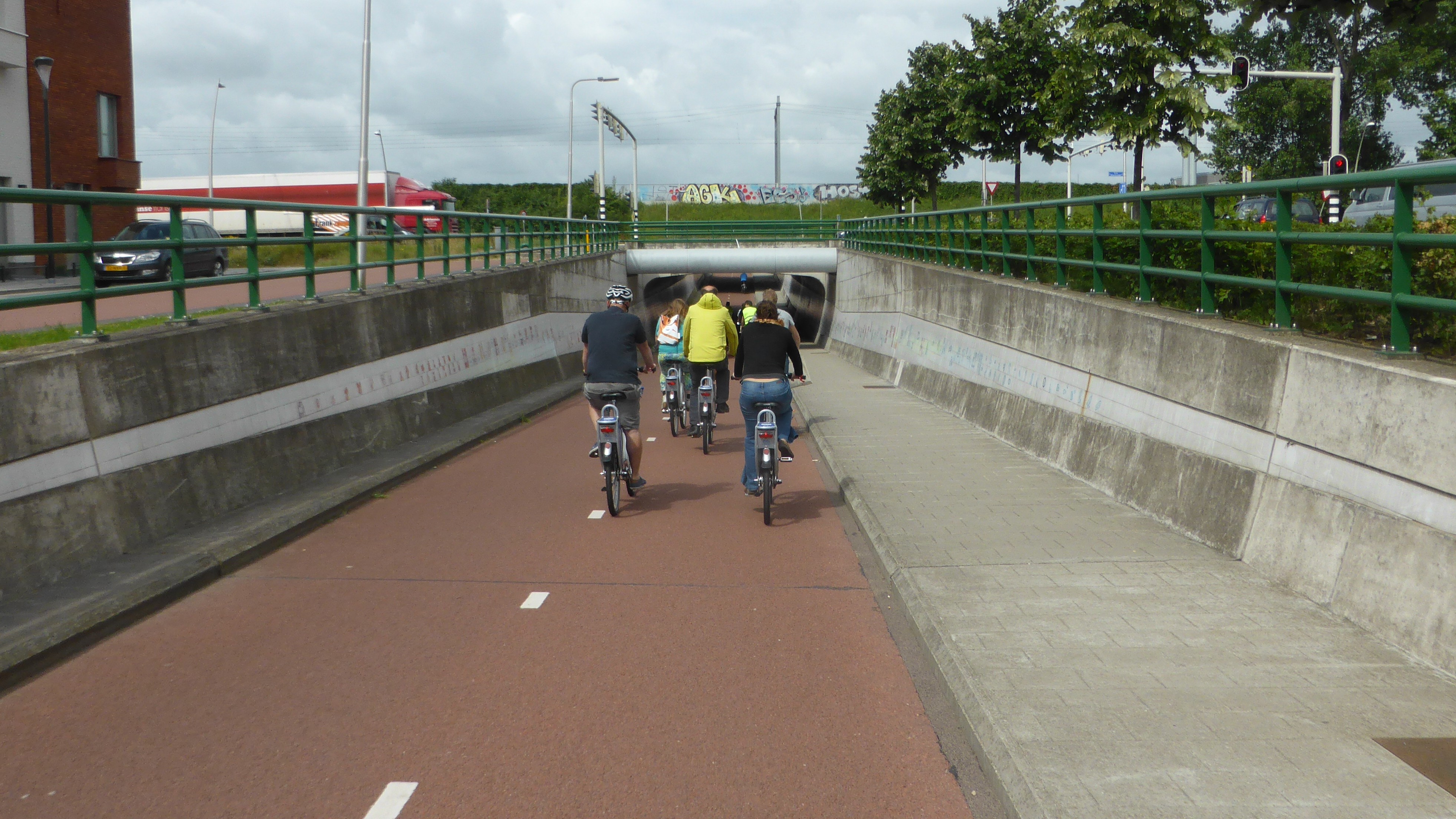
Bicycle tunnels on RijnWaalpad cycle highway
Where cycle highways meet busier roads, crossings are often grade-separated to maximise safety and minimise the need of stopping. We revisit RijnWaalpad to see how to design safe, comfortable and attractive bicycle tunnels.
Bicycle tunnels allow the crossing of busy roads without the need to stop. They require the cyclists to overcome smaller height differences than bridges (because the clearance required for car traffic is higher than for bicycles) and allow them to utilise the speed gained on descent to facilitate ascending. However, they are often a matter of concern in terms of social safety. Einsenhower tunnel in northern Nijmegen can be an example on how to alleviate such concerns.
Eisenhower tunnel connects Margaretha van Mechelenweg and Vrouwe Udasingel in Nijmegen. It allows cyclists to safely cross both railroad tracks and a busy road (N325), and provides a shortcut, not available to cars. It is also a part of RijnWaalpad, the cycle highway connecting Arnhem with Nijmegen. The tunnel is nearly 80 m long, therefore special care was taken in the design to ensure that people feel that is a safe place:
- There is sufficient space for cyclists and pedestrians, as well as clearance between the cycle path and the wall.
- When entering the tunnel, you can see all the way through to the other side. To achieve this, N325 road was slightly elevated to reduce the depth of the tunnel. The approach to the tunnel is straight from both sides. There are no dark corners obscured from view.
- Additional benefit of the straight approaches is that you can utilise the speed you gain on the way down to get out of the tunnel quickly. The slopes are gentle, so no braking is necessary.
- There are three “windows” in the roof, allowing daylight to enter significant sections of the tunnel.
- Smooth curves in the construction elements instead of the traditional straight angles also were introduced to increase the perception of social safety.
- Final touch is the anti-graffiti layer and tiles decorated with paintings from local children.
Other tunnels on the cycle highway follow similar design principles. The tunnels under A15 motorway and Kattenlegerstraat have walls leaning outwards, which helps to create a roomy feeling. Additionally, A15 tunnel features an interactive light sculpture. Kattenleger tunnel is much shorter and does not require overcoming any height difference, therefore the design is simpler, but still effective.
Many pedestrian and bicycle tunnels have a bad reputation because of their steep approaches, sharp turns or limited visibility. But RijnWaalpad can exemplify that when bicycle tunnels are located in the right place and well-designed, they can have a positive influence on coherence, directness (both in distance and in travel time), safety, comfort (no interruptions, shelter from rain), and attractiveness.
More about RijnWaalpad:
http://www.snelfietsroutesgelderland.nl/RijnWaalpad
https://bicycledutch.wordpress.com/2015/09/29/the-f325-fast-cycle-route-arnhem-nijmegen/
The article is part of a series showcasing examples of best practices implemented by CHIPS project partners on cycle highways in North-Western Europe. In the next article we will continue our journey on RijnWaalpad to visit one of the longest bicycle bridges in Europe.
Regions:
Network/Project Involved:
Contact the author
Recent news!
Upcoming events
Contact Us
Avenue des Arts, 7-8
Postal address: Rue de la Charité, 22
1210 Brussels, Belgium









